In 2013, 92% of the water for bath, in Spain, were of good or excellent quality. But also, we have to recognize that there were several areas (coastal and interior), that did not meet the optimal conditions for swimming.
However, today I just want to mention the interior areas with optimal conditions for swimming. And I found 15 natural pools, between the best in Spain.
Natural Swimming Pools are sealed natural areas, where it enters the sea water or spring water emerges or a river flows.
The natural pools are an unique resource for not a few rural areas. They have not spoken man, but to put up some stairs, walkways or a trampoline. Bathing areas are since "always", now they are a boom, for travelers seeking authenticity.
These are the top 15 natural swimming-pools, that I have found all over Spain:
Fontcalda:

Fontcalda is located in the town of Gandesa (Tarragona). Set between mountains, along the river Canaletes, the health resort “Fontcalda” is a surprise for walkers. The road, linking Gandesa with Benifallet, the C-43, gives access to a forest trail to the site. Nearby, the Shrine of s. XIV, and unforgettable scene of the Battle of the Ebro, in the Civil War, to which has been dedicated a museum highly recommended.
Aniol d'Aguja:
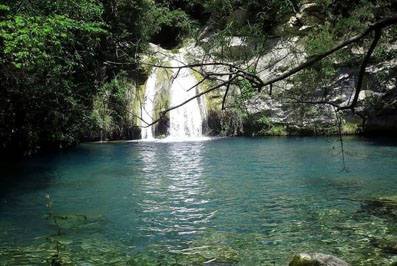
We follow in Catalonia, but now displaced to the province of Girona, in the beautiful region of La Garrotxa. The refreshing pool Gorg blau of Sant Aniol is a permanent stimulus for travelers, who choose hiking in the region. The route to get here is an attraction in itself cause of its local history and legends of the natural environment.
Beceite and path Parrisal:
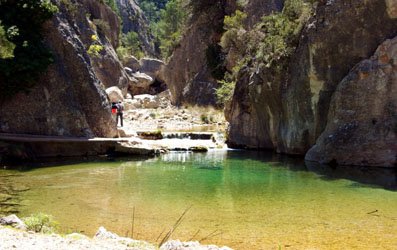
Between the marvelous landscape of the Beceite Ports, in the region of Maestrazgo (Teruel), is the path Parrizal of Beceite. Decorated with guns practiced by the river Matarrana and signaled from the Pla of the Mina to the Straits (1.5 h. From Beceite: 2.5 h), the route is accessible to all audiences. The pools, the natural pools are a great refresher for summer outings.
Natural pools in the Sierra of Gata:
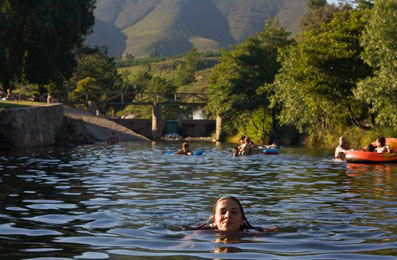
Holly (L'Acebu) is a picturesque village, in the Sierra of Gata, according to its inhabitants "famous for its lace bobbin and oranges". You can find it at Caceres, to the northwest, very close to the border with Portugal and sheltered in the foothills of Mount Jálama. 2 km from the village towards Ciudad Rodrigo, you will encounter the natural pools Jevero and Carreciá and bar services.
The Caletón in Garachico, Tenerife:

Canaries are especially abundant in natural pools. In general, on natural resources they seems unattainable. The Caletón is a natural pool located in the municipality of Garachico, on the island of Tenerife. The forms of this particular pool, in front of the Ocean dows not correspond to any famous architecture, although they are precious, but random lava solidified in 1706, when the volcano Trevejo erupted (also known as Arenas Negras).
A Chavasqueira:
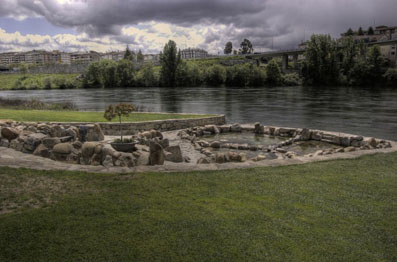
The Chavasqueira, in Ourense, are properly some thermal baths. As the Outariz pools, they seem out of context. Its waters emerge to 62.6 º and reach to 43 º, to the pools. There has been talked of its health benefits, as a treatment for osteoarthritis, acne or dermatitis. They are known as Caldas do Obispo (Caldas of Bishop), because it was the figure, who commanded the places to put for bath.
Garganta de los Infiernos:
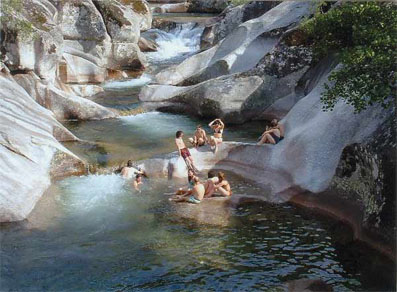
Lacking to the Jerte Valley, in Caceres, some natural pools such as the Garganta de los Infiernos, to get everything. And everyting is even cherries of the Jerte, the fruit of this white miracle of spring. The Garganta de los Infiernos is a Natural Reserve, in the Sierra de Gredos and it is the place from where you can access Extremadura from Ávila. These are not the only pools, but the most famous in the place. Also known as “Pilones” (Basins,piles), there are interesting routes through waterfalls, pools and flora and fauna of this place of Caceres.
Springs of the Algar:
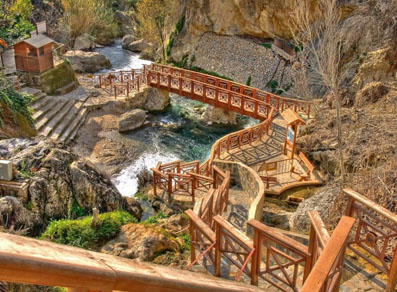
Les Fonts de l'Algar is located in Alicante, 15 km from Benidorm and 3 km from Callosa d'en Sarria. If someone has put an objection, to such a wonder, it is due to the saturation of visitors. In 2002, it was declared Wet Protected Area and, although it retains an excellent degree of environmental conservation, it has also integrated travel services something invasive. However, it is certain their conservation and the value, that they attach to environmental education, through information, routes, etc.. Adults pay 4 € and children 3 €.
Las Chorreras (the Frills):

In Cuenca, at the municipality of Enguídanos, you will find the place known as The Frills, in the course of the river Cabriel. The spot has been defined as "a chaos of waterfalls and cascades, side caves and emerald pools, at the foot of foaming rapids wild". It seems right. From the reservoir of Víllora until the Cabriel meets the Guadazaón (Junta de los Rios), there is a whole area of pools, in Cuenca. We have to try it.
El Charco Azul (The Blue Puddle):
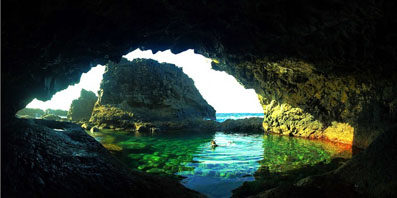
The Charco Azul is such a generic name, that it does not print, in word, it is a fantastic place. In the brief island of El Hierro, in El Golfo (municipality of La Frontera), Oceanfront, are arranged two small natural pools: caves accessed walking more than 15 minutes. One of them, which you are seeing, is the Charco Azul, a name (again) that could lead you to other natural pools with the same place name, but on the island of La Palma, in San Andrés and Sauces.
Pozas de Mougás (Pools of Mougas):
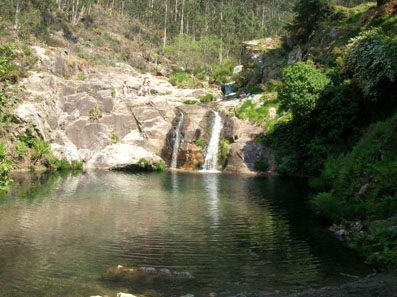
To the sea, different rivers run nervous through valleys, waterfalls and pools by the Serra da Groba. It Is the Concello of Oia, in Pontevedra, and rivers discussed here Mougásy Pious. The road, among Baiona and A Guarda, the C-550, which will need to achieve is to get to the pools. Near the natural pools of Rego das Pias, a recreational area was available.
La Maceta del Hierro (The Pot of El Hierro):
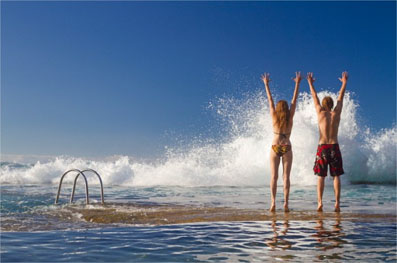
Of El Hierro we talked about its puddle, that natural plunge pool tucked into a cave. But there are more (God knows how many more) in the island: the beach called The Pot, but it is a viewpoint to infinity, with an integral, in the term of La Frontera natural pool. Here man has practiced, wisely, I must say, certain works: walkways, stairs and some other minor adjustments.
Cantonigrós:
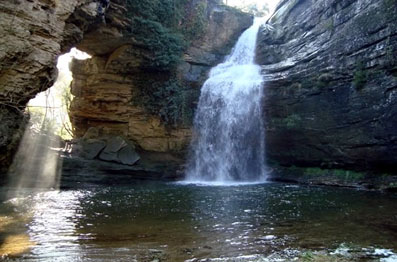
Very close to the beautiful village of Rupit, at St. Mary of Corcó (Barcelona) is Cantonigròs (or Cantoni). The place is usually visited for two reasons: the International Music Festival (July) and the area of La Foradada. The name refers to the gap (forat, in Catalan) forming the rock. At its side, a waterfall of 15 m created by a set of lights, a very special atmosphere to accessing people of all ages after a trip of about 20 minutes.
Piscinas naturales de Agaete (Natural pools of Agaete):
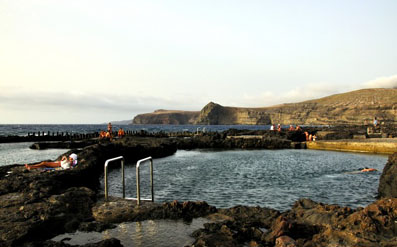
The place where the ancient salt were natural pools, today are facing the sea. Actually, Oceanfront: We are in Gran Canaria, in the term of Agaete. Water carries a steady flow, the pools are filled or emptied, according to the tide place. The refurbishment works have greatly improved the travel experience, in the natural pools of Agaete.
Pou Clar Ontinyent:
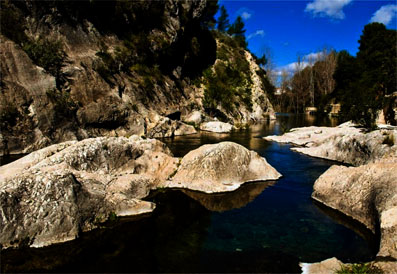
In Ontinyent, term of Valencia, the river rises. This is responsible for the natural pools of Pou Clar. Just spring, the river has formed a few feet away water wells to force crystal polish and pierce the rock. Each well has a name (the esclaus dels, the gelat the fosc ...). By car, you can get through the CV-81, among Ontinyent and Bocairent and taking the detour to the Alforins Fontanars, where you can find one parking.
Well, I hope that you have liked this post and you can come to Spain, in order to check, at least one of these natural pools.
Till soon, kind regards,
Luis.
Sponsored by Costaluz Lawyers.
Please click here below:
